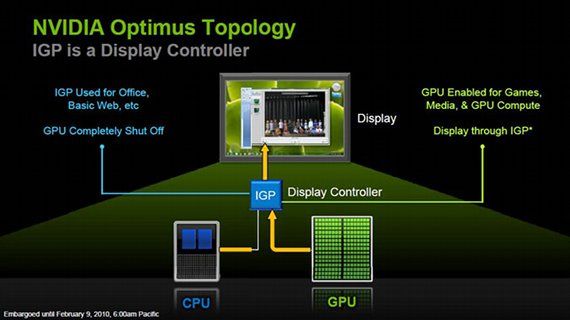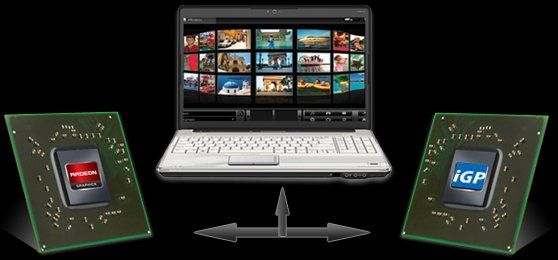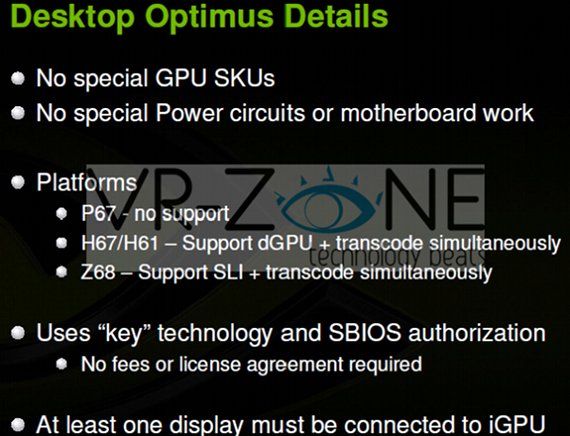<firstimage="https://www.makeuseof.com/wp-content/uploads/2011/05/switchablegraphicsthumb.jpg">
Graphics performance had traditionally been one of the great tradeoffs of any laptop. Finding a laptop with the hardware necessary to play HD video and 3D games hasn’t been an issue for years, but that same hardware was typically capable of chewing through even the largest battery in less than two hours.
Over the past year, however, there’s been a proliferation of a technology called switchable graphics. This tech makes it possible to completely turn off a discrete GPU when it isn’t needed, leaving the PC to run on its far less power hungry IGP. Now this technology looks set to make the leap to desktops later in the year – but what are switchable graphics, and how does it benefit you?
The Basics Of Switchable Graphics
The problem with discrete GPUs is the fact that they draw a lot of power even when only a fraction of their full potential is being used. This is a problem shared by all high-performance chips, and it happens because transistors leak power all of the time, even when not in use. A powerful discrete GPU has several billion transistors, so there’s a lot of leakage going on.
The only way to get around that is to switch the chip off entirely, but that has its own issues, particularly when you’re talking about a GPU. What you see on your laptop’s display is brought to you via a memory buffer, but a discrete GPU and an IGP will each have its own memory. This makes switching non-trivial, and it’s the reason why early switchable graphics implementations forced users to reboot whenever they wanted to switch.
However, seamless switching is possible with the proper drivers, and today is available on chips from Nvidia and AMD.
Nvidia & AMD’s Solutions
While both Nvidia and AMD have switchable graphics technology available, only Nvidia has been aggressive about marketing it. The green team has given the technology its own brand name, Optimus, and has stuck with that for some time now. Today, switchable graphics technology is all but standard among laptops with mid-range Nvidia GPUs.
AMD has been far less organized in its approach to switchable graphics. If you visit the company website you’ll be told that a wide variety of Radeon products support the feature, but "support" is a tricky word, because it only means that switchable graphics is an option, not that it’s enabled by default. You’ll have to carefully investigate a particular laptop’s feature set to find out if switchable graphics actually functions.
As both Nvidia and AMD’s solutions are heavily reliant on driver support, switchable graphics works on a limited number of operating systems. Optimus is only supported on Windows 7. AMD supports Windows 7 and Linux, but Linux users have to switch between the GPU and IGP manually.
Bringing Switchable Graphics To The Desktop
The ability to turn off a discrete GPU is obviously of great benefit to laptop computers because it no longer forces users to choose between a laptop with respectable graphics performance and a laptop with reasonable battery life. It’s little surprise that the technology was pioneered on mobile PCs.
Now that it’s matured however, there’s no reason that desktops can't get in on the action as well. Although desktops don’t have to worry about battery life, they still draw power, and that power costs users money. In addition to this, discrete GPUs on desktop computers can be a bit loud because of the large cooling fans used to exhaust excess heat. Nvidia wants to solve these problems, and is expected to bring switchable graphics to its desktop video cards this summer under the name of Synergy.
If you don’t feel like waiting, however, you can buy a current motherboard featuring the LucidLogix Virtu chip, which makes it possible to switch between an Intel IGP and a video card from Nvidia or AMD. However, only a few motherboards are currently shipping with this feature.
Conclusion
Switchable graphics is a technology that will become the norm within the next few years. Eventually, we’ll have trouble remembering a time when computers didn’t come with this feature by default. If you have any questions about switchable graphics, feel free to post them in the comments.




